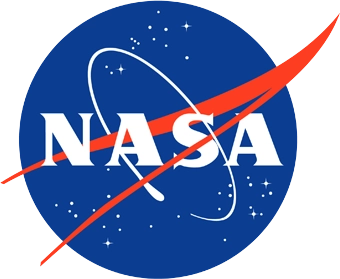
Did you always know that you wanted to be an Astrophysicist?
My journey into astrophysics has been a lifelong unfolding of passions. Was I always destined for the cosmos? Why not! From a young age, I was entranced by the universe – not just as a collection of distant stars, but as a canvas upon which myths and legends were woven. The ancient Greeks, with their tales of Olympian gods residing amongst the constellations, ignited a spark of curiosity within me. This fascination deepened as I discovered the wit of mathematics and its ability to unlock the secrets of the universe. Figures like Galileo Galilei, Leonardo da Vinci, and the countless women who have shattered barriers in astrophysics – from Hypatia of Alexandria to Jocelyn Bell Burnell – have served as beacons of inspiration. Their brilliance, their courage in pursuing knowledge, and their unwavering dedication to unraveling the cosmos have fueled an insatiable desire within me to contribute to this grand endeavor.
Astrophysics, for me, is a bridge between the poetic and the profound. It's the art of meshing the awe-inspiring beauty of the universe into the language of mathematics and physics. It's about deciphering the fundamental laws that govern the cosmos, pushing the boundaries of human understanding, and discovering our place within this vast and magnificent tapestry of existence.
What science questions do you investigate?
My research centers on unraveling the intricate nature of turbulence within space plasmas. This exploration spans a vast range of environments, from the solar corona—the Sun's superheated, outermost layer of plasma—to the solar wind, a continuous stream of that same magnetized plasma outflowing from the corona. I also investigate the magnetopause, the dynamic boundary where the solar wind meets and is largely deflected by Earth's magnetic field. My current work places a particular emphasis on the Earth's cusp, a pair of magnetic funnels near the poles where solar wind particles can directly penetrate the magnetosphere and reach lower altitudes.
My focus lies in investigating the interplay between the Sun, the magnetosphere and the Ionosphere, and the pivotal role of turbulence in driving energy transfer across diverse scales. I delve into fundamental questions such as:
- How does turbulence evolve and dissipate within these dynamic environments?
Turbulence evolves through a process called an energy cascade. This is a fundamental mechanism where energy is transferred from large to progressively smaller scales before it finally dissipates as heat. My research focuses on characterizing the various scales involved in this cascade and understanding the specific mechanisms responsible for the final dissipation of that energy, such as cyclotron damping and Landau damping, which ultimately heats the plasma. I am particularly intrigued by the phenomenon of intermittency, where intense bursts of activity punctuate periods of relative quiescence. This non-uniformity in turbulence profoundly influences energy transfer and particle acceleration processes. - What are the underlying mechanisms that govern turbulent processes?
My research explores the contributions of various factors, including magnetic reconnection, kinetic instabilities, and the interactions between distinct plasma populations, in the generation and sustenance of turbulence. - What are the significant consequences of turbulence for space weather impacting our daily lives?
Space weather events, significantly influenced by turbulence, can have profound impacts on our daily lives. For instance, I investigate how turbulence within the cusp region facilitates the entry of energetic particles into Earth's magnetosphere, potentially triggering auroral activity and geomagnetic storms. These events can disrupt critical infrastructure, including satellite communications, GPS navigation, and power grids, underscoring the urgent need for a deeper understanding of space weather phenomena and their potential consequences.
What research accomplishment are you most proud of?
I am most proud of my discovery of a new regime of inertial Alfvén waves turbulence. This discovery revolutionizes our understanding of how energy travels and particles accelerate within the space plasma environment. Understanding how energy moves through Earth's magnetosphere, the protective shield around our planet, and how it affects the ionosphere is crucial. This knowledge is not only essential for safeguarding the technological infrastructure that underpins our society but also for the success of future space missions and scientific advancements. My research delves into wave-particle interactions and energy transfer within these dynamic environments. It contributes to the development of more accurate space weather prediction models and is essential for designing and operating spacecraft that can withstand the harsh space environment.
To achieve this breakthrough, I analyzed data from the TRICE-2 rockets, which measured both the turbulent electric and magnetic fields. By combining these measurements, we were able to deduce a surprising finding: the turbulent energy flows to small scales along a pathway that is fundamentally different from what we've observed previously in space turbulence. Traditionally, we thought turbulence primarily energized electrons through a process called Landau damping, a mechanism by which electrons are accelerated by “surfing” along the electric field of the wave. However, our analysis suggests a new mechanism – cyclotron damping – is also at play. In this process, the protons gyrating about the Earth’s magnetic field are energized by the electric field of the turbulent fluctuations, which rotates in the same direction as the protons.
This research was recognized by the scientific community with its publication in Physical Review Letters and selection as a PRL Editors' Suggestion, but also by its broader impact. NASA mentioned this research on their social media channels, highlighting its potential contribution to our understanding of space weather phenomena.
In addition, I was honored to be an invited speaker this past August for the ST03 session—'Multiscale Solar-wind-magnetosphere Interactions'—at AOGS25, where I had the opportunity to present this research.
We directly experience the effects of turbulence in various ways, from encountering atmospheric turbulence during air travel to witnessing the mesmerizing auroral displays.
Are you involved in any upcoming space missions?
Yes, I am involved in two groundbreaking space missions (DYNAMIC and GDC), that will significantly advance the understanding of Earth's space environment.
I am a member of the Observing System Simulation Experiments (OSSE) team for the DYNAMIC (Dynamical Neutral Atmosphere-Ionosphere Coupling) mission. DYNAMIC plays a crucial role for unraveling the intricate interplay between the neutral atmosphere and the ionosphere. I am in charge of testing dedicated ionospheric software models, developing ad hoc algorithms to analyze synthetic data and simulate methodologies to demonstrate their feasibility, and quantify the mission's overall capabilities. This approach adds significant value by optimizing the mission design and ensuring maximum scientific return.
I am also a member of the science team for the Geospace Dynamic Constellations (GDC) mission. GDC represents a monumental leap forward in our ability to observe and understand geospace dynamics. By providing an unprecedented, multi-point perspective of the ionosphere and thermosphere, GDC will enable us to observe and understand the dynamic interplay of these regions in ways never before possible. This will allow us to probe how the magnetosphere interacts with the ionosphere and thermosphere, how this coupled system responds to external energy input, the structure of the upper atmosphere at local, regional, and global scales, and how the upper atmosphere modifies magnetospheric activity. I'm focusing on the modeling and visualization of satellite constellation orbital dynamics across all mission phases. I design and implement advanced analytical tools to extract valuable insights from mission data. By applying them to synthetic datasets, we ensure their robustness and accuracy forming a reliable tool to analyze real-world measurements and achieve our scientific objectives. Using AI/ML, we're able to identify hidden patterns and correlations. This enables us to derive new scientific insights and push the boundaries of what's possible with traditional analytical methods.
I recently joined the Moon to Mars (M2M) Space Weather Analysis Office (SWAO) to study spacecraft’s anomalies. These unexpected events, often tied to solar activity or complex interactions with the space environment, can lead to consequences ranging from temporary issues like instrument shutdowns and data corruption to more permanent damage to a spacecraft's electronics. By tracing the intricate connections between a space weather event and its resulting anomaly, we can develop more resilient technology and ensure the safety and success of future missions.

What is one thing you wish the public understood about your field of work?
One key aspect I wish the public better understood about my field of work is the profound impact of turbulence on the Ionosphere-Thermosphere-Mesosphere (ITM) system, the critical interface between our planet and the near-space environment. Turbulence is a fundamental driver of energy and momentum transfer within the ITM, influencing its dynamics and ultimately impacting our lives. We directly experience the effects of turbulence in various ways, from encountering atmospheric turbulence during air travel to witnessing the mesmerizing auroral displays, a spectacular manifestation of energy transport within the ITM, where turbulent processes play a key role. Furthermore, turbulent energy deposition, often originating from solar activity, can significantly disrupt our technological infrastructure, impacting satellite communications and even affecting power grids on Earth.
Recognizing that turbulence plays a pivotal role in shaping the behavior of the ITM system is crucial. This has profound implications for our ability to predict and mitigate space weather events, optimize aircraft design, spacecraft mission goals, and advance our understanding of fundamental plasma processes, ultimately contributing to a more sustainable and technologically advanced future.

Tell us about a unique or interesting component of your work-life balance.
A unique aspect of my work-life balance lies in the constant interplay of diverse passions. Beyond my research, I'm driven by an insatiable curiosity that fuels my exploration of history, music, art, and gaming. For instance, I find inspiration in the Renaissance masters, their brushstrokes capturing the essence of motion and light, much like the dynamic systems I study. Similarly, delving into historical archives, I'm captivated by the stories of past civilizations and the individuals who challenged the status quo. Music is an integral part of my life, from enjoying live performances to singing along during my commute. And, of course, gaming provides a valuable outlet – strategic thinking and problem-solving in the virtual world often translate to my research approach. I believe this multifaceted approach enriches my life and my work. By constantly seeking new knowledge and experiences, I cultivate a broader perspective and a more creative mindset, allowing me to approach challenges with a unique blend of rigor and ingenuity.
What is a fun fact about you?
I'm an insatiable traveler, forever yearning to explore new cultures. Every journey I embark upon is a treasure trove of experiences to broad my horizons. To commemorate these adventures, I've started a unique collection, alongside countless photos: a plate from each City or State I visit, a tangible reminder of the memories I've made.
Beyond the thrill of exploration, I find immense satisfaction in transforming everyday objects into something new and unique. In a world of constant consumption, I believe in the importance of preserving and repurposing. Just as in my job, versatility is the keystone. I've also discovered the beauty of handmade art, which allows me to transform materials into something useful and durable. It's another way to express myself, reduce my environmental impact, and connect with a more sustainable way of living.
Last but not least, the manga. I lose myself in the intricate world of shojo manga, drawing inspiration from the dynamic characters and captivating storylines. Hours can melt away as I sketch and shade, bringing my own creations to life with nothing but a pencil and paper.
In conclusion, life is too short to have one single passion. Whether it's the immersive worlds of video games, the vibrant pages of manga, or the captivating narratives of a good book, I find myself constantly drawn to stories that transport me to other realms. Reading before bed is a sacred ritual – a journey into the unknown that helps me unwind and prepare for the dreams that await.
Published Date: Sep 30, 2025.
Hometown:
Palau, Sardinia, Italy
Undergraduate Degree:
Bachelor of Science in Physical Sciences and Technologies, University of Calabria (UNICAL), Italy
Post-graduate Degrees:
Master of Science in Astrophysics and Plasma, University of Calabria (UNICAL), ItalyPh.D. in Physical Sciences, Chemical Technology and Materials - Curriculum: The matter as continuous medium: elasticity, fluids and plasmas; University of Calabria (UNICAL), Italy
